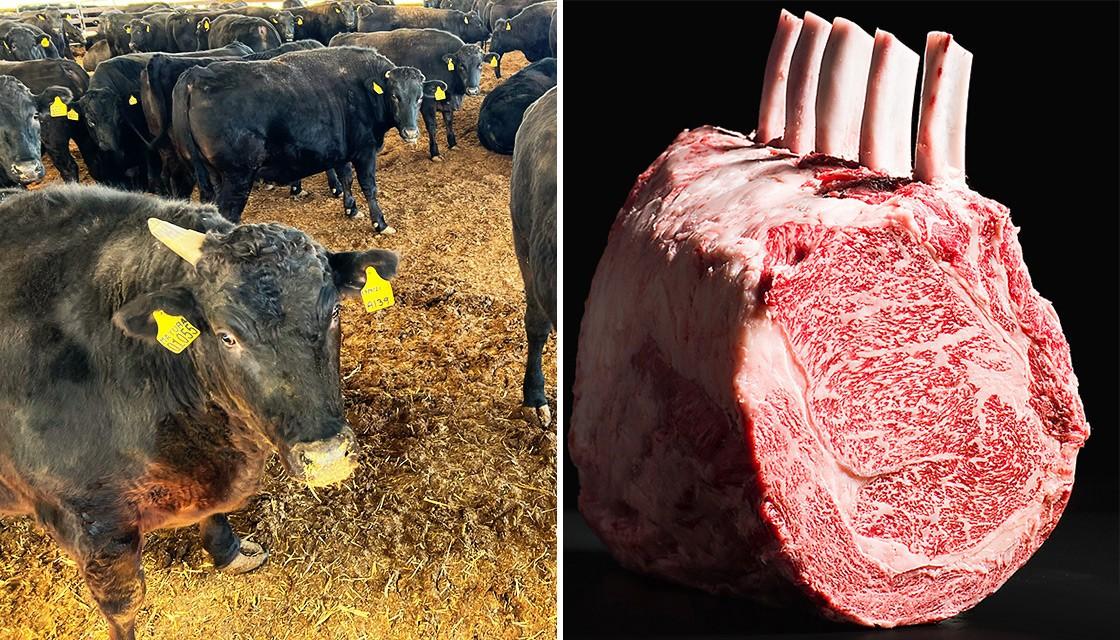
It doesn't matter how many amazing steaks you've eaten, the first time you taste proper, premium Wagyu beef is very special and often an experience you'll never forget.
This is a phenomenon that many Western travellers discover in yakiniku eateries in Japan, after which they're likely to be disappointed with the 'Wagyu' served in restaurants back home.
But recently I dined on some absolutely divine Wagyu much closer to home.
About 40 minutes drive out of Mount Gambier in South Australia I discovered Mayura Station, the ultimate destination for premium Wagyu beef lovers in Australasia.
It's the largest fullblood Wagyu farm outside of Japan and supplies its beef to a select few discerning distributors and retailers around the world. But it also serves its own beef at an onsite restaurant as a paddock-to-table dining experience like no other.
The cattle at Mayura Station are taken off the milk at around 6-8 months old before they spend up to 500 days on background feeding and finishing feed lots. By the time they're slaughtered they weigh around a whopping 800kg after having gorged on a mix of chocolate, lollies and grain for their last three months.

That special feed mix not only accentuates the delicious marbling that Wagyu beef is famous for, it also sweetens the meat and I can assure you the final result is very, very sweet indeed.
Before I get too excited about the deliciousness, let's cover off some basics.
What does 'fullblood' Wagyu mean?
First of all, what does 'Wagyu' mean? It's a collection of four breeds of Japanese cattle famed for the amazing beef they produce.
On the farms of Aotearoa, Angus is the primary breed of beef cattle, comprising 47 percent according to a 2017 report from Beef + Lamb NZ. Hereford comes in second place at 14 percent.
But some Wagyu is produced here, too. New Zealand Wagyu producer First Light describes the breed as "the Rolls Royce of beef, the food of Emperors and Samurai warriors". They're not wrong.
As for 'fullblood' Wagyu, that basically means purebred, as in 100 percent Wagyu. Often if you order Wagyu outside of Japan - especially if it's cheap - it'll only be partially Wagyu, with other breeds of cattle mixed in.
There's apparently no regulation on this, so some folk apparently sell beef as Wagyu even if it came from a beast that was, say, only 3 percent Wagyu. The cheek!

Mayura Station has around 10,000 fullblood cattle, grown from an initial 19 that were imported in the 1990s by a timber mill owner named Adrian de Bruin.
Megan Medhurst, front of house coordinator at Mayura Station's The Tasting Room restaurant, said de Bruin was inspired to do so after a life-changing dining experience.
"He used to export timber over to Japan. One time he was dining out over there, he tasted some Wagyu beef and said 'Oh my God, this is too good - I have to farm this myself!' Then he actually went through with that decision and it took off," Medhurst told Newshub.
Just as is the case with thoroughbred horses, Mayura Station cattle's ancestry, bloodlines and pedigree are crucial to the quality of the beef, which has won several awards over the last few decades.
Although most of it is exported around the world, it's awesome to be able to eat it on the land where it's produced.
"We are a destination restaurant and we're quite unique. Being able to serve what you produce is pretty special," said Medhurst.
The T-bone steak I enjoyed at Mayura was cooked quite basically. They used Wagyu fat as oil, chucked it on the grill and used a bit of Murray river pink salt as seasoning. With steak this good, that's all you want to do.

While most steak lovers will have enjoyed a T-bone before, dining at Mayura Station means you're likely to experience something you may have never tried before too.
"We try to showcase different cuts of beef and our chef comes up with some fabulous creations. We normally have a well known cut that goes in the four course dinner and then we'll try and sneak in something that's a bit lesser known to showcase the versatility of Wagyu," said Medhurst.
"So in the second course, sometimes we'll do an oyster blade which is generally for braising, slow cooking or stewing, but our Wagyu beef is of such a high quality that we'll just grill it and serve them. We have very few secondary cuts because the quality of the beef is just so good."
Before I enjoyed the T-bone, I was lucky enough to have some tataki made with dry aged Wagyu with a 9+ marbling rating. The garnish included some fresh wasabi and it tasted heavenly.
My first time at The Tasting Room on Mayura Station was one I won't forget. I sincerely hope it is not my last.
If you're a steak lover and there's a chance you're holidaying in South Australia any time soon, you owe it to yourself to experience The Tasting Room.
Newshub visited Mayura Station courtesy of the South Australian Tourism Commission.



